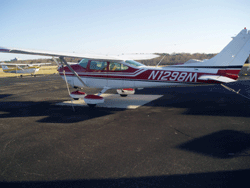Notice Number: NOTC7847 (Source: FAASafety.gov)
Question: I’ve heard differing explanations of where ADS-B will be required. Besides telling me, “it’s where a transponder is required today,” can you explain exactly where ADS-B “rule airspace” is located?
Answer: Title 14 Code of Federal Regulations (14 CFR) section 91.225 specifies the airspace in which ADS-B Out will be required after January 1, 2020. We often refer to it as “rule airspace.” You can find the actual regulation here (14 CFR 91.225) and you should familiarize yourself with its details.
The FAA also provides a Google Earth overlay that graphically depicts rule airspace to help you visualize where it is. This overlay is available at https://www.faa.gov/nextgen/equipadsb/research/airspace/. You can download the file to view on your personal computer. This should give you a good picture to determine whether you regularly fly in airspace where ADS-B will be required.
An easy way to identify ADS-B rule airspace while preflight planning, or while airborne, is to refer to a paper or electronic VFR sectional chart.
On the sectional, look for the magenta circles that depict class C airspace around large airports. Look for blue boundaries that depict the limits of class B airspace around the largest airports, and for those airports, a magenta circle depicting the Mode C veil. To fly in or above that airspace, you will need ADS-B Out.
If you fly anywhere over the 48 states at or above 10,000 feet mean sea level (MSL), except when below 2,500 above ground level (AGL), you’ll be in “rule airspace.”
In summary, ADS-B rule airspace is:
- in and above class B and C airspace,
- within the Mode C veil,
- in class A, and
- at or above 10,000 feet MSL, when in the lower 48 states.
Rule airspace also exists within a sliver of class E airspace from 3,000-10,000 feet MSL from the Gulf of Mexico coastline out to 12nm offshore.
This is just a simplified description of rule airspace. Be sure to refer to 14 CFR section 91.225 for the details.








